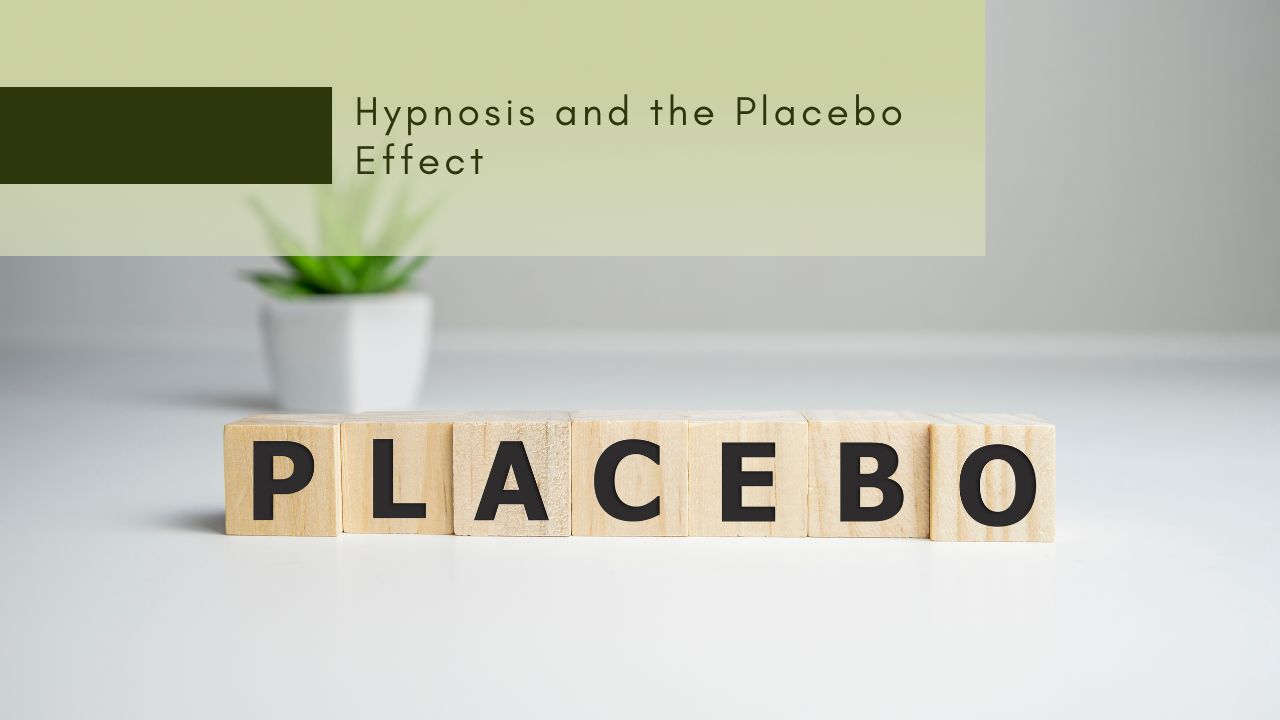In this article we will learn more about hypnotherapy for nightmare and whether or not it’s a useful solution to deal with them.
Beyond Monsters and Chases: The Psychological Roots of Nightmares
Nightmares can arise from various psychological factors, and understanding these roots can provide insight into their occurrence. Some common psychological roots of nightmares include:
- Stress and Anxiety
- Trauma
- Psychological Disorders: Certain psychological disorders, such as post-traumatic stress disorder (PTSD), depression, and anxiety disorders, are commonly linked to nightmares. These disorders can disrupt sleep patterns and increase the likelihood of experiencing nightmares.
- Medications and Substances: Some medications, particularly those that affect the central nervous system, can cause nightmares as a side effect. Similarly, substances like alcohol and recreational drugs can disrupt sleep cycles and contribute to nightmare occurrence.
- Sleep Disorders
- Grief and Loss
- Childhood Experiences
- Emotional Distress
The Body in Nightmareland: How does stress and trauma affect nightmares?
High levels of stress and anxiety are often associated with an increase in nightmares. Stressful events or ongoing anxiety can lead to the activation of the brain’s fear response during sleep, resulting in frightening dreams.
The Impact on Sleep: Why Nightmares Leave You Feeling Frazzled
Nightmares can leave you feeling frazzled for several reasons, both psychological and physiological. Reasons include::
- Emotional Intensity: Nightmares often involve intense emotions such as fear, anxiety, sadness, or anger. These emotions can linger upon waking, causing distress and a sense of unease throughout the day.
- Disrupted Sleep: Nightmares can disrupt your sleep cycle, particularly if they occur during the REM (rapid eye movement) stage of sleep, which is associated with vivid dreaming. Interrupted sleep can lead to feelings of fatigue, irritability, and difficulty concentrating during waking hours.
- Activation of Stress Response: Nightmares can activate the body’s stress response system, including the release of stress hormones like cortisol and adrenaline. This physiological reaction can leave you feeling on edge and mentally drained after experiencing a nightmare.
- Rumination and Intrusive Thoughts: Following a nightmare, you may find yourself ruminating on the content of the dream or experiencing intrusive thoughts about the frightening imagery or events. This rumination can exacerbate feelings of anxiety and contribute to a sense of being frazzled.
- Impaired Emotional Regulation: Nightmares can impair your ability to regulate emotions effectively, particularly if they are recurrent or linked to underlying psychological distress. Difficulty managing emotions can lead to heightened stress levels and a feeling of being overwhelmed.
- Impact on Daily Functioning: Persistent nightmares can interfere with daily functioning, including work, relationships, and recreational activities. The cognitive and emotional toll of frequent nightmares can leave you feeling frazzled as you struggle to cope with their disruptive effects on your life.
- Sense of Vulnerability and Powerlessness: Nightmares often feature scenarios in which you feel vulnerable or powerless, such as being chased, attacked, or trapped. These themes can evoke feelings of helplessness and insecurity, contributing to a sense of being frazzled and emotionally drained.
Can You Really Control Your Dreams? The Power of Hypnotherapy in the Sleep Realm
Hypnotherapy can be an effective tool for defanging nightmare monsters by addressing the underlying psychological factors contributing to the nightmares and promoting positive changes in thought patterns and behaviors. Here’s how hypnotherapy can help:
- Accessing Subconscious Mind: Hypnotherapy allows individuals to access their subconscious mind, where deeply rooted beliefs, memories, and emotions reside. By exploring the subconscious, hypnotherapy can uncover underlying issues or traumas that may be fueling nightmares.
- Reframing Negative Beliefs: Hypnotherapy helps individuals reframe negative beliefs and perceptions that contribute to nightmares. Therapists can guide clients through techniques such as cognitive restructuring and visualization to replace negative thoughts with more positive and empowering beliefs.
- Processing Trauma: For individuals who have experienced trauma, hypnotherapy can be used to process and desensitize traumatic memories. Through techniques like regression therapy or eye movement desensitization and reprocessing (EMDR), hypnotherapy helps individuals revisit and reprocess traumatic experiences in a safe and controlled manner, reducing their impact on sleep and dreams.
- Stress Reduction: Hypnotherapy is effective in reducing stress and anxiety, which are common triggers for nightmares. By inducing a state of deep relaxation and teaching relaxation techniques, hypnotherapy helps individuals manage stress more effectively, reducing the likelihood of experiencing distressing dreams.
- Creating Positive Imagery: Hypnotherapy utilizes visualization techniques to create positive imagery and experiences that can counteract the negative content of nightmares. Therapists can guide clients through visualizations of calming scenes, empowering experiences, or solutions to recurring nightmares, helping to defang the monsters and promote feelings of safety and control.
- Building Coping Skills: Hypnotherapy equips individuals with coping skills and techniques to manage nightmares when they occur. Clients learn relaxation exercises, self-soothing techniques, and imagery rehearsal to cope with and reduce the intensity of nightmares, empowering them to take control of their dreams.
- Improving Sleep Hygiene: Hypnotherapy addresses sleep hygiene practices to improve sleep quality and reduce the likelihood of nightmares.
- Therapists may provide guidance on establishing a regular sleep schedule, creating a relaxing bedtime routine, and minimizing factors that disrupt sleep.
Rewriting the Script: Reprogramming Your Subconscious for Peaceful Sleep
Reprogramming your subconscious for peaceful sleep involves various techniques and practices aimed at changing negative thought patterns, reducing stress and anxiety, and promoting relaxation. Below are some strategies to reprogram your subconscious mind for peaceful sleep:
- Positive Affirmations: Repeat positive affirmations related to sleep and relaxation before bedtime and throughout the day. Affirmations such as “I am calm and at peace,” “My mind and body are ready for restful sleep,” or “I release any tension or worries from my mind” can help reprogram your subconscious to associate sleep with relaxation and tranquility.
- Visualisation: Practice visualization techniques to create mental images of peaceful and calming scenes, such as a serene beach or a tranquil forest. Visualise yourself drifting off to sleep effortlessly and waking up feeling refreshed and rejuvenated. Engaging in positive visualizations before bedtime can signal to your subconscious mind that it’s time to unwind and prepare for sleep.
- Progressive Muscle Relaxation: Engage in progressive muscle relaxation exercises to release tension and promote physical relaxation before bedtime. Start by tensing and then relaxing each muscle group in your body, working your way from your toes to your head. This practice helps reduce physical tension and signals to your subconscious that it’s time to let go of stress and prepare for sleep.
- Deep Breathing Exercises: Practice deep breathing exercises, such as diaphragmatic breathing or the 4-7-8 technique, to calm your nervous system and promote relaxation. Deep breathing signals to your subconscious mind that you are safe and secure, helping to alleviate anxiety and stress that may interfere with sleep.
- Guided Imagery: Listen to guided imagery or meditation recordings specifically designed to promote relaxation and peaceful sleep. These recordings typically incorporate soothing music, calming imagery, and guided relaxation scripts to help quiet the mind and induce sleepiness.
- Mindfulness Meditation: Practice mindfulness meditation to cultivate present-moment awareness and reduce rumination and worrying thoughts that can interfere with sleep. Mindfulness techniques help reprogram your subconscious to focus on the present moment rather than dwelling on past or future concerns, promoting a sense of calm and tranquility conducive to sleep.
- Limiting Screen Time: Minimise exposure to electronic screens (such as smartphones, computers, and TVs) before bedtime, as the blue light emitted from screens can interfere with the production of the sleep hormone melatonin. Instead, engage in relaxing activities such as reading a book, taking a warm bath, or practicing gentle yoga stretches to signal to your subconscious that it’s time to wind down for sleep.
- Creating a Relaxing Bedtime Routine: Establish a consistent bedtime routine that includes relaxing activities to signal to your subconscious that it’s time to transition from wakefulness to sleep. This could include activities such as dimming the lights, listening to calming music, practicing relaxation techniques, and avoiding stimulating activities or caffeine close to bedtime.
By incorporating these techniques into your daily routine and bedtime rituals, you can reprogram your subconscious mind to associate sleep with relaxation and peace, making it easier to achieve restful and rejuvenating sleep. Consistency and practice are key to effectively reprogramming your subconscious for peaceful sleep over time.
Dream Yoga for the Modern Age: Cultivating Awareness and Dream Empowerment
Dream yoga is a practice that originates from Tibetan Buddhism and is centered around the idea of using the dream state as a means for spiritual growth, self-discovery, and enlightenment. In the modern age, dream yoga can be adapted and integrated into everyday life to cultivate awareness and empowerment in dreams. Below are some principles and techniques of dream yoga for the modern age:
- Lucid Dreaming: Lucid dreaming is a central aspect of dream yoga, involving becoming aware that you are dreaming while still in the dream state. This awareness allows you to consciously navigate and interact with the dream environment, enabling you to explore your inner world, overcome fears, and gain insights into your subconscious mind. Practices such as reality checks, dream journaling, and setting intentions before sleep can help induce and enhance lucid dreaming experiences.
- Dream Recall: Cultivating the ability to remember and recall dreams is essential for practicing dream yoga. Keeping a dream journal by your bedside and recording your dreams immediately upon waking can help improve dream recall over time. Reviewing and reflecting on your dreams regularly can provide valuable insights into your unconscious mind and facilitate personal growth and self-awareness.
- Dreamwork Practices: Engaging in dreamwork practices involves exploring the symbolism, themes, and emotions present in your dreams to gain deeper understanding and insight. Techniques such as dream analysis, symbol interpretation, and dream reentry (returning to a dream while awake) can help unravel the messages and meanings hidden within your dreams, empowering you to integrate their wisdom into your waking life.
- Meditation and Mindfulness: Cultivating mindfulness and meditation practices in your waking life can enhance awareness and presence, making it easier to recognse the dream state and maintain lucidity while dreaming. Integrating mindfulness techniques such as breath awareness, body scanning, and loving-kindness meditation into your daily routine can deepen your connection to the present moment and facilitate lucid dreaming experiences.
- Intention Setting: Setting clear intentions before sleep can influence the content and quality of your dreams. By consciously directing your focus and energy toward specific goals, desires, or questions, you can guide the subconscious mind to explore relevant themes and provide insights or solutions during the dream state. Affirmations, visualisations, or mantra recitation before bedtime can help reinforce your intentions and facilitate meaningful dream experiences.
- Empowerment and Integration: Dream yoga encourages you to view dreams as a mirror reflecting aspects of your inner self and psyche. By embracing and integrating the insights, emotions, and lessons revealed in your dreams, you can cultivate self-awareness, personal growth, and empowerment in both your dream and waking lives. Practicing gratitude, self-reflection, and self-compassion can further support the process of integration and transformation.
In summary, dream yoga offers a practical and accessible framework for cultivating awareness and empowerment in dreams, allowing you to harness the transformative potential of the dream state for personal and spiritual development in the modern age. Through lucid dreaming, dreamwork practices, meditation, intention setting, and integration, you can unlock the wisdom of your subconscious mind and awaken to the limitless possibilities within your dreams and yourself.
From Terrified to Triumphant: Success Stories of Nightmare Re-Scripting with Hypnosis
Overcoming a lifelong fear of flying can be a challenging journey, but with determination, support, and the right strategies, it is entirely achievable.Below is an example of one woman’s journey to conquering her fear of flying and enjoying nightmare-free skies:
Sarah, a 35-year-old woman who has harbored a crippling fear of flying since childhood. For her, the mere thought of stepping onto an airplane triggers intense anxiety, panic attacks, and nightmares. Despite her desire to travel and explore the world, her fear has held her back for years, causing her to miss out on countless opportunities and experiences. The following are techniques Sarah used to overcome her fear of flying:
- Understanding the Fear: Sarah begins by educating herself about the nature of her fear of flying. She learns about common triggers, physiological responses to anxiety, and the underlying beliefs and thought patterns that contribute to her fear. By gaining a deeper understanding of her fear, Sarah feels empowered to address it more effectively.
- Seeking Professional Help: Recognising that overcoming her fear of flying may require professional guidance, Through cognitive-behavioral therapy (CBT) techniques, exposure therapy, and relaxation and hypnosis exercises, Sarah learns practical strategies for managing her anxiety and gradually desensitising herself to the triggers associated with flying.
- Building Coping Skills: Sarah learns a variety of coping skills and relaxation techniques to manage her anxiety during flights. Deep breathing exercises, visualization, mindfulness meditation, and progressive muscle relaxation help her stay calm and grounded when anxiety arises. Sarah also practices positive affirmations and self-talk to challenge negative thoughts and replace them with more empowering beliefs.
- Support Network: Sarah surrounds herself with a supportive network of friends, family, and fellow travelers who understand and empathize with her fear of flying. She shares her progress, setbacks, and victories with her support system, receiving encouragement, reassurance, and practical tips along the way.
- Facing Fears Head-On: Despite her initial apprehension, Sarah confronts her fear of flying by booking a flight to a destination she has always dreamed of visiting. With her therapist’s guidance and support, Sarah boards the plane with a newfound sense of courage and determination. During the flight, she employs the coping skills and strategies she has learned, gradually building confidence and resilience with each passing mile.
- Celebrating Successes: After landing safely at her destination, Sarah feels an overwhelming sense of pride and accomplishment. She celebrates her success in overcoming her fear of flying, recognizing the hard work and perseverance that led her to this moment. With each subsequent flight, Sarah continues to build on her progress, eventually reaching a point where flying feels comfortable and even enjoyable.
Through her journey, Sarah demonstrates that overcoming a lifelong fear of flying is possible with dedication, support, and the willingness to confront fears head-on. By facing her fears, seeking professional help, and cultivating coping skills, Sarah transforms her nightmare-filled skies into a realm of freedom, adventure, and limitless possibilities. Her story serves as an inspiration to others struggling with similar fears, showing that with courage and determination, anything is possible.
Breaking the Cycle of Trauma: How Hypnotherapy Healed Nightmares and Sleep
Hypnotherapy can be a valuable tool in breaking the cycle of trauma and healing nightmares and sleep disturbances. The techniques below show how hypnotherapy can help:
- Exploring the Root Cause:
- Reprocessing Traumatic Memories:
- Creating New Associations:
- Building Coping Skills:
- Integration and Empowerment:
- Maintenance and Continued Growth:
Through the power of hypnotherapy individuals are able to break the cycle of trauma, heal nightmares, and reclaim the ability to sleep peacefully thus enabling the transformative potential of hypnotherapy in addressing trauma-related sleep disturbances and fostering healing, resilience, and empowerment.
Embracing Dream Lucidity: Discovering the Creative Potential of Hypnotherapy-Enhanced Sleep
Lucid dreaming, the state of being aware that one is dreaming while still in the dream, offers a unique opportunity to tap into the subconscious mind and harness its creative potential. By combining hypnotherapy techniques with lucid dreaming practices, individuals can enhance their ability to access and influence the dream state, opening doors to profound insights, inspiration, and self-expression.
Lucid dreaming occurs when the dreamer becomes aware of their dreaming state while still immersed in the dream narrative. This awareness enables individuals to actively participate in and even control aspects of their dreams, shaping the dream environment, storyline, and experiences.
Hypnotherapy techniques, such as guided imagery, visualisation, and suggestion, can be utilised to enhance the lucid dreaming experience and promote deeper relaxation and receptivity during sleep. By incorporating hypnotherapy into bedtime routines or pre-sleep practices, individuals can cultivate a more conducive mindset for lucid dreaming and creative exploration.
Lucid dreaming offers a fertile ground for creativity and innovation, providing a platform for exploring new ideas, problem-solving, and artistic expression. Through hypnotherapy-enhanced sleep, individuals can tap into their subconscious mind, accessing untapped reservoirs of creativity, imagination, and inspiration. Whether it’s composing music, writing stories, or creating artwork, lucid dreaming can serve as a canvas for unleashing creative impulses and bringing dreams to life.
Lucid dreaming facilitated by hypnotherapy can also serve as a powerful tool for self-discovery, personal growth, and spiritual exploration. By delving into the symbolic language of dreams, individuals can gain insights into their innermost thoughts, desires, and fears, illuminating aspects of their psyche that may be hidden or suppressed in waking life. Through lucid dreaming, individuals can confront challenges, overcome obstacles, and embark on transformative journeys of self-exploration and healing.
Beyond its creative and introspective aspects, hypnotherapy-enhanced lucid dreaming can have practical applications in various domains, including sports performance, academic learning, and therapeutic interventions. Athletes can use lucid dreaming to visualse and refine their skills, students can enhance learning and memory retention through dream-based rehearsal, and therapists can utilise lucid dreaming as a therapeutic tool for treating phobias, trauma, and other psychological issues.
In conclusion, Embracing Dream Lucidity utilising hypnotherapy enhanced sleep highlights the transformative power of combining hypnotherapy techniques with lucid dreaming practices. By harnessing the creative potential of the subconscious mind during sleep, individuals can unlock new realms of imagination, insight, and self-discovery, paving the way for personal growth, innovation, and holistic well-being.
Your Toolkit for Dream Mastery: Techniques and Tips for Hypnosis-Powered Sleep
Setting the stage for peaceful dreams explores the practice of incorporating hypnosis into bedtime routines to promote relaxation, alleviate stress, and enhance the quality of sleep and dreams. Components of pre-sleep hypnosis rituals and their role in fostering peaceful dreams are listed below:
- Creating a Relaxing Environment
- Practice Mindfulness and Relaxation Techniques
- Using Guided Imagery and Visualisation
- Affirming Positive Affirmations and Suggestions
- Setting Intentions for Dreaming
- Journaling and Reflection: After completing pre-sleep hypnosis rituals, individuals may find it beneficial to journal or reflect on their experiences, thoughts, and emotions before drifting off to sleep. This process allows individuals to release any lingering concerns or worries, providing closure to the day and creating space for peaceful and restorative dreams to unfold.
In conclusion, Pre-Sleep Hypnosis Rituals emphasise the importance of incorporating hypnosis into bedtime routines to promote relaxation, alleviate stress, and enhance the quality of sleep and dreams. By cultivating a mindful and intentional approach to sleep, individuals can create a nurturing sleep environment that sets the stage for peaceful dreaming and optimal well-being.
Hypnotic Dream Anchors: Reclaiming the Power of Your Nightmares
Hypnotic Dream Anchors involves exploring the concept of using hypnotic techniques to transform nightmares into sources of empowerment and self-discovery.Hypnotic dream anchors can help individuals reclaim control over their nightmares and harness their transformative potential by:
- Identifying Triggers and Themes
- Creating Hypnotic Suggestions
- Understanding and Establishing Dream Anchors: Once hypnotic suggestions are formulated, individuals can establish dream anchors that serve as focal points for redirecting the content and emotions of nightmares. These dream anchors may take the form of positive imagery, affirmations, or sensations that evoke feelings of safety, empowerment, and resilience.
- Rehearsing Dream Anchors: Through regular practice and rehearsal, individuals can strengthen their association between dream anchors and feelings of safety and empowerment. This may involve visualisation exercises, meditation, or self-hypnosis techniques that incorporate the use of dream anchors to induce a state of relaxation and control.
- Engaging with Nightmares: When confronted with a nightmare, individuals can actively engage with their dream anchors to shift the narrative and emotions of the dream. By focusing on the dream anchors and repeating hypnotic suggestions, individuals can regain control over their dreams and reshape them into more positive or neutral experiences.
- Integrating the Experience: After engaging with nightmares using hypnotic dream anchors, individuals can reflect on their experiences and integrate any insights or emotions that arise. This process allows individuals to reclaim the power of their nightmares and harness their transformative potential for personal growth and healing.
Hypnotic dream anchors highlight the efficacy of using hypnotic techniques to transform nightmares into sources of empowerment and self-discovery. By establishing dream anchors and engaging with nightmares in a mindful and intentional manner, individuals can reclaim control over their dreams and cultivate a sense of empowerment and resilience in the face of fear and adversity.
Creating a Dream Journal: Documenting Your Journey and Unlocking Insights
Creating a dream journal is a valuable practice for documenting your dreams, exploring their meanings, and unlocking insights into your subconscious mind.Below are some tips ons how to create and utilise a dream journal effectively:
- Choose a Journal: Select a notebook or journal specifically designated for recording your dreams. Choose one that appeals to you aesthetically and feels comfortable to write in. Alternatively, you can use a digital journaling app if you prefer to document your dreams electronically.
- Set an Intention: Before going to bed each night, set an intention to remember your dreams. This signals to your subconscious mind that you value and want to recall your dreams, increasing the likelihood of dream recall.
- Record Dreams Promptly: Upon waking, immediately write down any dreams or fragments of dreams you remember. Even if you can only recall snippets or emotions from the dream, jot them down as soon as possible. Memories of dreams can fade quickly upon waking, so recording them promptly is crucial.
- Include Details: Record as much detail as you can remember about each dream, including the setting, characters, plot, emotions, and any significant symbols or themes. Pay attention to sensory experiences, such as sights, sounds, smells, and textures, as they can provide valuable insight into the dream’s meaning.
- Use Descriptive Language: Use descriptive language to capture the essence of your dreams vividly. Engage your senses and emotions as you describe the dream, allowing yourself to relive the experience on paper.
- Reflect and Interpret: Take time to reflect on your dreams and explore their potential meanings. Consider how the dream relates to your waking life, your emotions, and any ongoing issues or concerns. Look for patterns, symbols, and recurring themes that may offer insight into your subconscious mind.
- Notice Dream Signs: Pay attention to recurring elements or symbols in your dreams, known as dream signs. These can serve as markers that you are dreaming and may help you become lucid in future dreams. Record any dream signs you notice in your journal.
- Experiment with Interpretation: Experiment with different methods of dream interpretation, such as Jungian analysis, Freudian theory, or personal associations. Trust your intuition and allow your dreams to speak to you in their own language.
- Review and Analyse: Periodically review your dream journal entries and analyze them for common themes, patterns, and insights. Notice any changes or trends over time and consider how your dreams may be evolving in response to your life circumstances.
- Set Intentions for Dreaming: Before going to bed each night, set intentions for the type of dreams you’d like to have or the questions you’d like answered. Write these intentions in your dream journal to reinforce them and increase the likelihood of dream recall.
- Express Gratitude: End each dream journal entry with a note of gratitude for the insights and experiences gained from your dreams. Cultivating gratitude for your dreams encourages a deeper connection with your subconscious mind and fosters a sense of appreciation for the wisdom they offer.
By creating and consistently maintaining a dream journal, you can deepen your understanding of your dreams, gain valuable insights into your subconscious mind, and embark on a journey of self-discovery and personal growth.




